Updated: August 1st, 2022
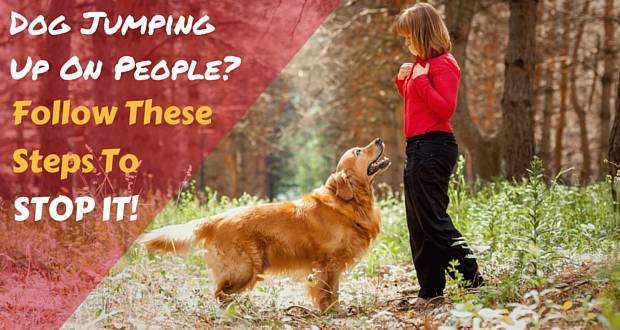
It’s happened again. Your neighbor stopped by for an unexpected visit, and as the back door opened, before you had time to act or even think, your visitor was on the floor.
The culprit? Your well-meaning, but overly excitable golden retriever.
When you brought home your cuddly ball of fluff, that excitability was pretty adorable, as was the jumping and licking that went along with it. Now that your retriever has grown, you’re wondering what you’ve gotten yourself into.
As your neighbor can attest, there’s nothing cute about a dog that knocks you down when saying hello.
Can you train your dog to tone it down and stop jumping up on people? Of course you can! Keep reading to find out how.
Why Do Dogs Jump Up When Greeting?
Your dog jumps up for many reasons — first and foremost because they’re excited and they want to prove it to you.
They also jump up because they want to be closer to your face so they can smell you. Dogs naturally sniff other dog’s faces during greetings and they want to give everyone they meet the same treatment.
Lastly, your dog jumps up because you never taught them what to do instead.
As with most behavioral issues, the buck stops with you.
Dogs who start out jumping on people as puppies and get told how cute they are, and encouraged to do so, will continue to jump up as adult dogs. That is, unless we teach them how to greet people properly.
Why Your Dog Should NOT Jump Up When Greeting People
If your dog is beyond the puppy stage and still jumping up on people, it needs to stop. There are so many reasons why jumping up should not be tolerated. Here are a few, and I’m sure you can think of more if you try.
- Your dog’s paws are often dirty, and nobody appreciates muddy paw prints on their clothes (okay there may be a few special souls who do, but they’re in the minority).
- Your dog’s nails could potentially rip clothing or skin.
- There are children smaller than your golden retriever that get easily knocked over. There are also children who are afraid of dogs. A dog who jumps could traumatize or hurt them.
- Your full-grown retriever could easily knock over a healthy adult, but you should be especially concerned with the elderly, infirm, and disabled who could suffer real harm if knocked down. Not only would you feel terrible, but you could also face a lawsuit.
Is There More to Jumping Than Just Excitement?
Most golden retrievers are saying hello in the only way they know how. Some dogs, however, jump up to express more than just an excited greeting.
If your dog jumps up while growling or barking, they could be showing aggression, not excitement.In addition to growling and/or barking, aggressive dogs might “muzzle punch” (punch with their nose), become still and rigid, lunge at visitors, and potentially bite.
Luckily this is rare in golden retrievers who are bred for their gentle temperaments as much as any looks, but if your dog has a history of aggression, or you feel they’re showing aggression when greeting people, please consult a professional trainer or a behavioral modification specialist. It is not a behavior that can be taken lightly or treated yourself.
You can read more about aggression from this link at the ASPCA.
Four on the Floor: How to Keep Your Dog from Jumping Up
You hold the keys to your dog’s heart – but also the key to their failures and successes. Behavior modification can be done, and it’s up to you to train it.
Yes, it takes patience. Yes, it can be frustrating, but your dog truly wants to please you, and will learn this important skill if you are steadfast in your training.
Here are four methods you can use to help you keep your dog from jumping up.
First and Foremost – Remove the Reward
To your dog, the obvious reward for jumping up is getting up-close-and-personal with you or the person they are greeting.
Your dog wants your attention and jumping up is their way of demanding it. And if they get any – good or bad – then that’s the reward. And they will do it again next time.
Therefore, when your dog jumps, remove all attention, both positive or negative.
Do not look at your dog, do not reach your hands out to push them away. Simply walk past or away from them, and go about your business.
This may leave your dog wondering what happened. It may also encourage your dog to try new tactics. But only when your dog puts all four feet on the floor to greet you should you turn to them and offer up treats, pets, and calm praise.
Do not offer up too much excitement, which may cause your dog to jump up again. If this happens, go back to ignoring your dog. They’re smart, and eventually they’ll get it. Eventually they will twig that if they jump, they get ignored, if they’re calm and remain on the ground, they get what they want.
Only four on the floor should earn any form attention from you!
And we shall discuss a little later, you must do this every time, all the time. Never, not once, can you encourage or reward jumping. If you do, it will never end.
Turn Aside from the Jump
When your dog attempts to jump, get out of the way.
Similar to the method above, but with a key difference — you’re not going about your business. Instead, you’re waiting for your dog to recognize their mistake.
When your dog jumps up, turn around, do not make eye contact, and fold your arms across your chest. Some dogs will try to nuzzle your hands and folding your arms removes that possibility.
When they manage to keep four on the floor, you can initiate a calm greeting. This technique works well for dogs who need immediate feedback.
Be sure to treat and praise them as soon as they have all four paws on the ground. Mark and reward the correct behavior. If you say jumping is wrong, telling what not to do isn’t enough, you also need to train what they should do instead.
Leave The Room
In some situations, you may be able to simply leave the room when your dog jumps up. First, say hello at the door. If your dog jumps up, turn around and walk out. Simple.
Stay away for 30 seconds, then go back in and say hello. If your dog jumps again, repeat the procedure.
It won’t be long before your dog catches on, that you will only stay if they aren’t jumping up.
Train Your Dog To Sit For a Greeting
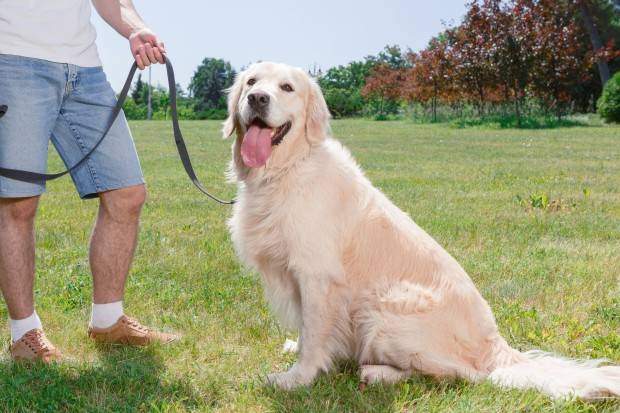
With a mix of the above techniques, your dog should slowly be getting the message about what not to do when greeting you. But as previously mentioned, that’s not enough. They need an alternative behavior to replace the jumping. You need to teach what they should be doing instead.
Most dogs are familiar with the sit command and even if yours isn’t it’s one of the easiest things to teach. So teach your dog to sit when saying hello. A sit is a calm position and with their bum on the floor, they cannot possibly be jumping. So a reliable sit is the easiest alternative behavior to jumping.
After enough repetitions of praise and reward for sitting for a greeting, they will quickly realize it’s highly rewarding and will gladly offer up the desired behavior. Here’s how to go about it.
- First be sure your dog knows the cue to sit reliably through all kinds of distractions. Practice sits in different locations until your dog will do it anywhere. If you need to work on this skill, check out our article on How to Train a Golden Retriever to Sit.
- Once your dog is sitting reliably, practice having them sit through common triggers that will signal a greeting – when the doorbell rings or when a car pulls into the driveway.
- Every single time your dog successfully sits, praise and treat them generously.
- Now it’s time to work on sitting for a greeting. Practice coming home with treats at the ready. When you walk in the door, ask for a sit. If your dog sits, reward them with delicious treats, kind words, and gentle petting. If your dog jumps up, immediately use one of the first three methods above.
- It’s important that your dog is rewarded every time they offer up the desired behavior – in this case, sitting – and is punished (by removal of your attention) if they don’t. Before long, your golden retriever will be sitting every time they greet you.
What To Do About Everyone Else
Now that your dog has started working with you on calm greetings, it’s time to bring your family, friends, and visitors into the mix. This is the hard part.
Even if you’ve been working round the clock with your dog, the calm greetings you’ve been experiencing won’t automatically translate to others. Teaching your dog manners is hard work, but it will be all for naught if you and your dog are the only ones working at it.
Therefore, extend your training to encompass your family and friends. In order for your dog to learn the rules, they must be consistent across the board for everyone in the household, as well as friends and visitors.
Don’t be above handing out treats to your guests as they sail through the door. Or pre-arm your friends with treats before they come to the door (you’ll have to arrange this beforehand.)
Be sure to discuss with them clearly, if they come to your house and your dog jumps up, they MUST walk away from this rude behavior and to NEVER encourage jumping.
If there are people in your life who you know won’t comply, be sure to leash your dog and work with them during the visit, so your dog isn’t inadvertently rewarded for the wrong behavior.
Ask Friends to Help With Dedicated Training Sessions
Rope in some friends to help with training – that’s what friends are for!
A ten-minute session every now and then is all that’s required and your friends will benefit from your dog’s new found manners just as much as you will.
Prep them beforehand so they’re prepared to implement the four methods outlined above. If you are practicing sit for greeting, keep your dog on a long leash and be sure your friend backs away if your dog breaks the sit. You want to avoid any occurrence of your dog successfully jumping up. A long line enables you to do this.
Strangers Can Help Too.
When a stranger asks to say hello to your dog, say “sure, but I’d love it if you could help us with our training.”
Let them know that your dog’s not allowed to jump and ask them to back away if your dog loses control. If you’ve been working on a sit for greeting, now is a great time to practice.
Have your dog sit beside you and treat them lavishly as the person approaches to say hello. If your dog breaks a sit, the stranger must back away and ignore the dog.
With you, all friends and even strangers doing the same thing and not rewarding jumping with any attention, before long your dog will learn they get longer hellos and a lot more treats and attention if they keep all four on the floor.
Tips to Remember When Training Your Golden Retriever Not to Jump
- Things may get worse before they get better. This phenomenon is known as an extinction burst and it means your tactics are working. Don’t believe me? This post from examiner.com does a great job of explaining the psychology behind extinction bursts. Stick with your tactics, don’t give up, you’re likely getting somewhere!
- Consider crating. Crating your dog can sometimes make them even more excited to meet visitors to your home. However, it’s a great way to manage the situation if you have a surprise visitor and don’t have time to practice your dog’s skills. For more information on crate training, please read How to Crate Train a Puppy or Dog.
- Perhaps let your dog hold a toy to greet people. Dogs who become quickly over-excited sometimes find it easier to hold a toy when greeting. It has a calming effect, something else to focus on. Like a pacifier with a baby. Keep a few toys by the door where you receive visitors and encourage your dog to grab a toy as soon as you (or someone else) enters your home.
- Stay calm yourself when greeting your dog. Excitement is contagious and excited dogs love to jump around.
- Be Patient. Your dog just wants to please you. If you’re patient and persistent, they will learn to greet you and others politely without jumping up. But it won’t happen overnight, give them time to learn.
- Be consistent. No matter how hard you work on changing this behavior, if you occasionally let your dog jump up for whatever reason, you’ll be right back to square one. If jumping is a habit you want your dog to break, you have to make sure jumping up is NEVER allowed. And everybody has to work with this same rule: Family members, visitors and strangers. Everybody.
What to Avoid When Training Your Dog Not to Jump
- Do not shout or get angry. Shouting will only confuse your dog, and depending on their personality, they will either become afraid, or even more excited. Either way, it doesn’t promote a respectful relationship and can be very counter-productive.
- Do not knee your dog in the chest. Many books and web articles suggest you raise your knee to block your dog when they jump. This can work, but we cannot condone this method. On one leg it’s easier for you to fall and get hurt, and you could also potentially hurt your dog. Please use the force free, positive methods above, not violence!
- Do not push your dog off you. Pushing will quickly become a game to your dog and won’t teach them anything. It’s a form of interaction, and interaction is rewarding. To you, you’re telling them off, to them they got a reward. And rewarded behaviors increase. So, no pushing!
- Do not punish your dog after they have jumped up. Your dog will not understand punishment after the fact. They may think you’re punishing them for saying hello in the only way they know how, which might lead to your dog running away from you in fear instead of greeting you happily. Instead, ignore unwanted behavior (removing any reward) and pile in with rewards for the behaviors you do want to see.
Final Thoughts
Your golden retriever is special — not just as your dog, but as your loving and faithful friend, a partner who stands by you through all life’s ups and downs. With such an important role in your life, it’s only natural that you want them with you as often as possible.
But to have that wonderful companion dog, who you can take with you wherever you go, good manners are crucial.
When your dog jumps up on you, your family, your friends or even strangers, it only makes it harder to have them around as much as you’d like.
By taking the time to teach your dog to stay off people, you are paving the way for more outings, more socializations, and more fun.
A dog who respects boundaries is a pleasure to be around, and a steadfast companion in every situation.

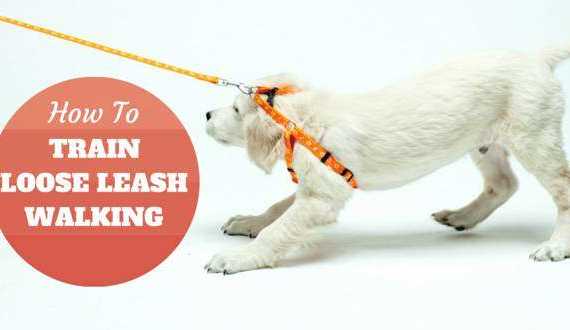
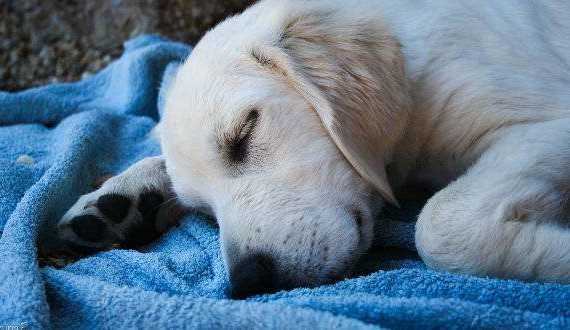
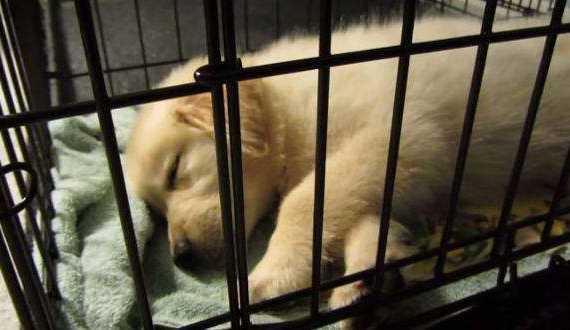
2 Comments
Kat Whelan
Hi
I am the proud mommy of a rescue “Kyia” 2 yes 2 month I got her at 14 months ! She was horrible afraid of life. N sounds n trucks cars etc: Weve come along way ! However even going on 3 mile hikes daily n running playing ball play dates each day 3 times before I leave for work ! She all the sudden is taking off on our excursions which she hasn’t done before n won’t comw back ! So solution is to keep her leashed! Yes I get it ! But we live in the most incredible place where there is a river n bridge hills dog areas n pebble pathways for over 3 miles ! I love her to death but all the sudden she won’t listen or even show she is remotely bothered by her lack of obiedence! Funny not funny ! Even when I walk in from work first thing I do is put my back pack down grap her and we go on a playing run and walk for a good 30 mins n mins you it’s about 11:30 pm when I get home so she has been in 10 hours at that time ! So that’s why I make sure we’re out each day before work for two hours long! I can’t seem to get her mind into remembering “oh yeah this I can’t do “ any advice please
Victor Ferns
My Golden retriever Pup 11 weeks old is teething and keep biteing every thing around.
I used the bitter formula it works with some of the furniture but a constant nibble bite and Hand gnawing
which is hurtful and irrateing all the time.
He continued to grab at lower ends of sarees, or dresses and dosent leave till mouth forced open and leave it is said.
At what age will this stop and what should I do for now to avoid family get hurt or clothes torn.
He is sweet lovable and very energetic.
But very hyper..